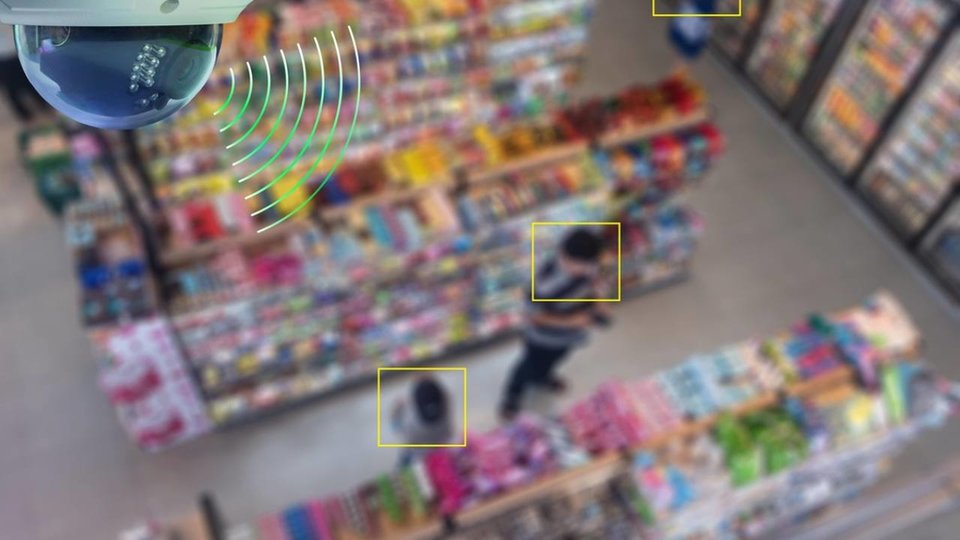
The Art of Retail Security: Blending Timeless Wisdom with Cutting-Edge Technology
My first retail job was at a popular gag gift store in the local mall more than 30 years ago. Retail crime was problematic back then and has, unfortunately, only continued to grow more prevalent. The main difference is that thieves have now become more sophisticated and organized. Fortunately, the solutions to combat this trendline have also advanced in sophistication.
Retail theft, including organized retail crime, costs U.S. stores billions each year, according to the National Retail Federation. Even with lawmakers cracking down on retail theft, retailers of all sizes––from Big Box stores to C-stores––are exploring innovative solutions to protect profits and ensure a seamless shopping experience for their customers. One of the most powerful and effective approaches is to combine traditional anti-theft techniques with newer technologies.Here are five steps for fortifying your defenses.
Traditional retail security techniques are rooted in tried-and-true on-site vigilance. At my first job, one of the most popular items for shoplifters was our jewel-toned disposable lighters. To deter shoplifters, we displayed the lighters at the counter next to the cash register. Each time we sold a lighter, we dropped a fresh one into the display case to fill its vacant slot. With one quick glance at the case, we could spot if a lighter had been stolen. It was a simple yet effective strategy. Empty aisles invite temptation. Just as in the pre-tech days of the 1980s, having well-trained personnel positioned strategically or moving freely through the store can deter potential shoplifters. Staff can actively monitor the sales floor, restock inventory, and interact with customers to create a strong visible presence and create a more welcoming environment.
While having a staff presence within the store is important, employees can’t be everywhere. That is the power of surveillance and why cameras have long been a staple in retail security. But there are more options today besides mounting cameras in strategic locations––and more reasons to deploy surveillance technologies. Small profile Smart TV screens can be placed near high-ticket items, like electronics and jewelry, to display live video feeds of customers as they shop, alerting potential thieves that they are being watched. Retailers can also integrate advanced digital surveillance technologies with high-definition cameras, facial recognition, and analytics to further enhance the effectiveness of surveillance efforts and gain insights into customer behavior. Collectively, such strategies enable real-time monitoring and greater threat detection, and provide concrete data on shopping trends and traffic flow within the store. The data you glean may point to the need to apply additional security measures, as well as new sales opportunities.
One significant challenge for retailers is to identify when inventory is being stolen. Smart alarms and sensors represent a marriage between traditional alarm systems and modern technology. This is the type of security that would have been helpful at the novelty store I worked at in high school. These innovative devices offer real-time alerts when specific items are moved or tampered with, enabling swift response from store personnel. Similarly, smart tags attached to high-value items can trigger alarms when exiting the store without proper deactivation. The pairing of these technologies with surveillance capabilities adds another layer of protection to thwart thieves proactively.
Create a Strong Staff Presence within the Store
Leverage Cameras for Surveillance and Insights
Sound the Alarm on Missing Inventory
In the retail environment, Wi-Fi plays a pivotal role in enabling security technologies. Without Wi-Fi connectivity, cameras, sensors, alarms, and digital screens may not operate as intended. For example, they may be able to capture but not transmit data and images properly. This is especially problematic when it comes to bandwidth-intensive surveillance videos, which can bog down Wi-Fi and hamper other in-store applications like the point of sale (POS) system.
While tackling these security elements may be intimidating, there are resources available to help. Managed Security Service Providers (MSSPs) can work closely with a retailer to ensure that the underlying network can support any number of deployments. For example, an MSSP will ensure that Wi-Fi coverage spans the location’s perimeter, so that external surveillance cameras can be installed for maximum security. The MSSP will secure endpoints on a network to protect against cyber attacks that penetrate vulnerabilities associated with add-on devices, like cameras. An MSSP can also verify that routers have adequate port density to accommodate extra equipment. Finally, an MSSP can configure automatic failover backup capabilities so that the network and all its associated security technologies are always up and running to protect the store against shrinkage and theft.
By blending traditional anti-theft techniques, like well-trained employees and strategic store layouts, with innovative security technologies and an MSSP that can optimize network performance, retailers can enhance their ability to deter thefts, tackle loss prevention more effectively, and ultimately improve the customer experience.





